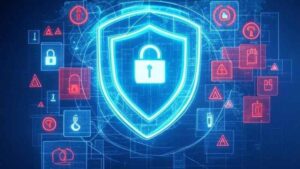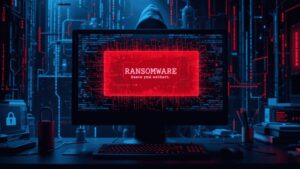Understanding the Cybersecurity Landscape
At a never-before-seen rate, the digital world is changing, thereby causing cyber risks to grow more complex and sophisticated. Growing numbers of cyber threats threaten data security, financial stability, and even national security for organizations, businesses, and people. The Matrix of All Current Cybersecurity Issues is analyzed in this guide, which offers a thorough view of rising dangers, practical case studies, and useful protection methods to mitigate internet threats.
What is a Cybersecurity Threat Matrix?
Used to organize and assess many cyber threats, a Cybersecurity Threat Matrix of all current cybersecurity issues is a structured system. It helps security experts to discover weaknesses, forecast assault patterns, and implement strong security policies. The matrix of all current cybersecurity issues contains headings for:
- Cyber assault vectors and strategies.
- Potential adversaries include insider threats, nation-states, and hackers.
- Impact evaluation of companies and people.
- Proactive risk control approaches.
- Incident response solutions are meant to help hasten recovery.
Such a matrix of all current cybersecurity issues can support organizations’ efforts in improving their threat intelligence capabilities, reducing their incident response time, and even contributing to their overall matrix of all current cybersecurity issues posture.
Importance of Understanding Current Cyber Threats
Cyber threats are developing extremely fast. To avoid great damage, an organization or person would have to remain aware. Understanding these risks helps one to
- Supporting cyber protection policies.
- Cutting down on both financial and reputational costs.
- Verifying adherence to the worldwide matrix of all current cybersecurity issues standards.
- Putting proactive risk reduction strategies into effect.
- Improving cyber awareness training for individuals and staff.
Matrix of All Current Cybersecurity Issues in 2025
Attackers in 2025 are using AI, automation, and advanced social media engineering to carry out more sophisticated cyberattacks than ever. Let us investigate the main cyber threats driving the present situation.
AI-Powered Cyber Attacks (Deepfakes, Automated Exploits)
In cybersecurity, artificial intelligence (AI) is a two-edged blade. Although AI supports defense systems, cybercriminals are using it for sophisticated assaults as well.
- The deepfake tool is being used to fake executives, edit social media, and disseminate false information.
- With automated exploits, hackers can search and assault unprotected networks in just seconds.
- Machine-learning-generated phishing emails are getting harder to tell from real correspondence.
- Malware generated by AI can adapt in real-time to bypass detection technologies.
- Adversarial attacks by artificial intelligence, not being friendly, can change machine learning models to drive wrong forecasts.
Ransomware and Cryptojacking
Ransomware attacks are increasing and aimed at businesses, people, and essential infrastructure. Also on the rise is cryptojacking, which is the unlawful mining of cryptocurrency.
- Double extortion methods entail both the encryption of data and the demand for a payment of ransom upon threat of disclosure.
- Even nontech-savvy culprits can run ransomware attacks thanks to RaaS (RaaS).
- Systems infected with crypto-jacking software mine digital currencies without the user’s knowledge.
- AI-driven ransomware versions change their behavior according to the victim’s security level.
- Ransomware aimed at industrial control systems (ICS) can physically damage infrastructure.
Social Engineering Threats (Phishing, Business Email Compromise)
Via different social engineering techniques, cybercriminals exploit human psychology.
- Phishing attacks deceive people into sharing private data.
- Business Email Compromise (BEC) entails pretending to be upper management in order to approve illicit deals.
- Newer assault vectors becoming common include vishing (voice phishing) and QR code phishing.
- Using text messages containing corrupt links, smishing (SMS phishing) aims at users.
- By means of AI-generated voices and videos, deepfake social engineering seeks to control people.
Infrastructure Attacks (IoT, Supply Chain, Cloud Security)
Cybercriminals view modern infrastructure as a top objective.
- Cybercriminals can gain unsanctioned entry to smart devices with IoT weaknesses.
- Weak access controls and misconfigurations cause a cloud matrix of all current cybersecurity issues.
- Supply chain hacks go after suppliers and vendors to compromise more extensive networks.
- In the Internet of Things and cloud settings, zero-day vulnerabilities offer companies serious security concerns.
- Serverless computing security weaknesses expose fresh cybercriminal attack vectors.
Advanced Persistent Threats (APTs) and State-Sponsored Cyberwarfare
- State or national governments conduct cyber espionage so they can gather knowledge of competitors.
- Critical infrastructure such as government networks and power systems is are aim of cyber warfare.
- APTs work quietly for long periods, exposing sensitive information.
- Democratic processes are threatened by attacks on election equipment.
- Using military AI weapons raises ethical questions and a matrix of all current cybersecurity issues.
Ransomware: A Critical Issue in the Cybersecurity Matrix
Example: Colonial Pipeline Attack (2021)
Among recent ransomware blasts, the Colonial Pipeline Attack of 2021 was one of the most serious by far. By ransoming around, the ransomware assault compromised the fuel source in the whole country, hence underlining the weaknesses in vital infrastructure.
Ransomware Trends in 2025
- More focus on the financial and healthcare industries.
- Fileless ransomware evolution with bypassing typical security mechanisms.
- Larger ransomware supply lines make assaults more compounded and destructive.
- Rising use of state-sponsored ransomware is meant to disrupt politics and finances.
- By including the threat of DDoS assaults with encryption, and data breaches, triple extortion plots.
Best Defense Strategies
- Reducing attack surfaces by using zero-trust security systems.
- putting in AI-based threat detection and sophisticated endpoint protection
- Improving backup and disaster coverage solutions to help prevent ransomware from spreading.
- Training staff members on ransomware awareness and reaction guidelines.
- Deploying deception tools to early identify and foil cybercriminals.
Cyber Defense Strategies & The Priority Matrix
Cyber Threat Intelligence (Strategic, Tactical, Operational, Technical)
Cyber Threat Intelligence Dashboard (Technical, Operational, Strategy, Tactical).
Comprehension of various levels of threat intelligence:
- Strategic Intelligence: Research of cyber trends over an extended period.
- Tactical intelligence: Researching attacker tactics.
- Operational Intelligence: Real-time threat observation
- Technical Intelligence: Researching exploits and malware.
- Powered by artificial intelligence, automatic threat intelligence boosts detection speed.
Cybersecurity Priority Matrix: Key Components & Use Cases
By pointing out high-risk threats, a priority matrix of all current cybersecurity issues priority matrix enables companies to allocate resources wisely.
- Risk assessment models make sure that risks are ranked.
- Automating incident response speeds up recovery from cyberattacks.
- Before they become major, continuous monitoring systems discover dangers.
- With security orchestration and automatic response, incident management is ideal.
Conclusion: Future of the Matrix of All Current Cybersecurity Issues
Key Takeaways from the Threat Matrix
- Great dangers are posed by artificial intelligence, ransomware, and advanced persistent threats.
- Immediate attention is needed for supply chain risks and cloud security.
- The matrix of all current cybersecurity issues would change drastically thanks to quantum computing.
- Staying ahead of cybercriminals depends considerably upon proactive threat intelligence.
- Matrix of all current cybersecurity issues structures, such as MITRE ATT&CK Matrix for Cyber Threats helps to plan an organized defense.
Predictions for the Next Five Years
- Better cyber threat detection powered by artificial intelligence.
- Broad acceptance of quantum-proof encryption.
- More focus is given to cyber-resilient systems.
- Great international coordination on cyber policies.
- Rising demand for ethical AI in the matrix of all current cybersecurity issues to keep accidental threats at bay.

Ahsan Ali is a technology blogger and the founder of Techzivo.com, a platform dedicated to delivering insightful and practical content for tech enthusiasts.He currently focuses on creating in-depth articles around cybersecurity, aiming to help readers stay safe and informed in the digital world. With a passion for emerging technologies, Ahsan plans to expand Techzivo’s coverage into other technology micro-niches such as AI, cloud computing, and digital privacy, offering valuable insights for a broader tech-savvy audience.




